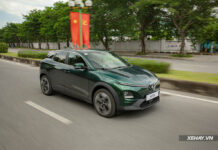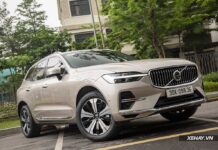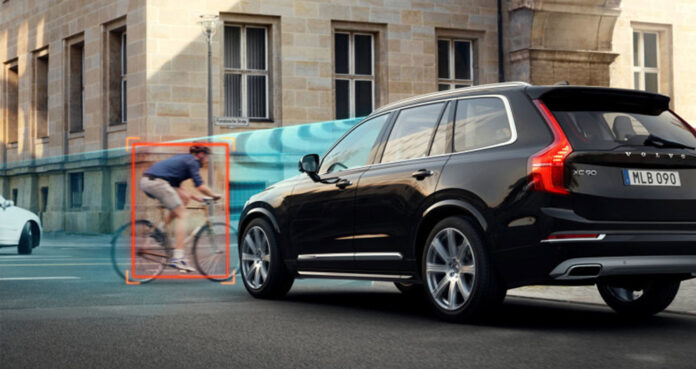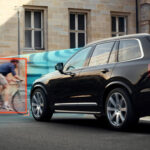If a customer is shopping for a car, they may come across various advanced safety features that their current vehicle may not have. Most car manufacturers offer these technologies, with some even including them as standard features.
However, many customers still question whether they really need these features and how they work.
It’s important to note that not all systems operate in the same way, even if they share the same name. For example, one manufacturer’s front collision warning system may perform better than another’s system with the same function.
Some systems are more advanced than others, with the ability to activate functions at higher speeds or even take over the driver’s role.
Furthermore, different companies may use different terms to refer to the same feature in their marketing campaigns. For example, Toyota’s Pre-Collision System and Honda’s Collision Mitigation Braking System are essentially the same as GM’s Low-Speed Forward Automatic Braking feature.
Let’s explore some advanced safety and driver support features to better understand which system offers the greatest value to customers.
Front Collision Warning System:
This system scans the road ahead and alerts the driver through lights and the horn. Many advanced systems can also detect pedestrians, cyclists, or animals. Multiple versions of this system have been developed by different car manufacturers.
Emergency Autonomous Braking System:
With this feature, if the driver fails to respond to potential danger warnings, the vehicle will automatically apply the brakes. The speed range at which this system operates depends on the vehicle type and version.
Braking Assist:
This feature detects when the driver needs to brake suddenly and provides additional anti-lock brake pressure to bring the vehicle to a stop. Research has shown that most drivers cannot apply enough braking force in emergency situations. Car manufacturers have developed this feature to prevent or reduce the severity of accidents. Brake assist is usually included as a standard feature.
Blind Spot Warning System:
This system monitors the driver’s blind spots and alerts them to the presence of other vehicles through lights in the A-pillar or rearview mirror. If the driver attempts to change lanes, the lights will flash or a warning sound will be emitted. Some systems can even steer the vehicle back into its original lane as a last resort, although this feature is often linked to lane-keeping assist.
Rear Cross-Traffic Alert System:
The rear cross-traffic alert system accompanies the blind spot warning system to alert the driver to approaching vehicles, objects, or pedestrians from both sides and the rear. This system is especially useful when the driver is backing out of a parking space.
Lane Departure Warning System:
The lane departure warning system activates when the vehicle drifts out of the lane and alerts the driver through audio, visual cues on the instrument cluster, or a vibrating steering wheel or seat. Some systems can also detect when the driver is about to completely leave the road, alerting them and taking certain corrective actions.
Lane-Keeping Assist System:
This system is an enhanced version of the lane departure warning system. In addition to providing warnings, the lane-keeping assist system gently steers the vehicle back into the lane.
Sometimes, these features may use the brakes to achieve similar effects. However, the steering system is more frequently involved. The capability and quality of this system heavily depend on the car manufacturer. Some impressive cars can naturally keep the vehicle centered in the lane, while others may cause passengers to sway between lane markings or intervene excessively.
Driver Attention Monitoring System:
This system monitors the driver to detect excessive distraction or drowsiness. The vehicle can alert the driver and recommend taking a break.
Automatic Crash Notification System:
Many car manufacturers offer systems similar to “emergency telegrams” that connect to the driver’s smartphone or a dedicated connection port, such as GM OnStar or Hyundai BlueLink. These emergency communication systems include an automatic crash notification feature, which automatically calls 911 when the vehicle’s airbags deploy. Additionally, these systems often feature emergency call buttons and the ability to remotely lock/unlock the vehicle or assist in locating it if stolen.
Automatic High Beam Headlights:
When the vehicle detects sufficient darkness and no approaching vehicles, it will automatically activate the high beam headlights to provide optimal visibility for the driver. The system will automatically switch off the high beam headlights when a vehicle approaches.
This feature is typically included in a comprehensive safety technology package along with front collision warning.
Airbags:
Most basic car buyers understand the concept of airbags, but they may still be unsure how many airbags their vehicle needs. Government regulations mandate front airbags in the steering wheel and dashboard, as well as airbags to protect passengers’ upper bodies. These airbags can be placed in doors or seats. Side airbags are often installed to protect passengers’ heads and drop from the roof to cover the side windows.
Usually, these airbags cover all seats, but there are exceptions depending on the manufacturer. Some additional airbags include rear side airbags that work similarly to front airbags, knee airbags for the driver or front passenger, side airbags on both sides (Mercedes-Benz), airbags in the middle to prevent passengers from colliding (General Motors), and seat-mounted airbags in front to protect passengers from being trapped under the seatbelt (Toyota).
While the effectiveness and role of these additional airbags may vary, what’s important is for customers to compare crash test data of vehicles in the same segment, rather than solely counting the number of airbags.














































